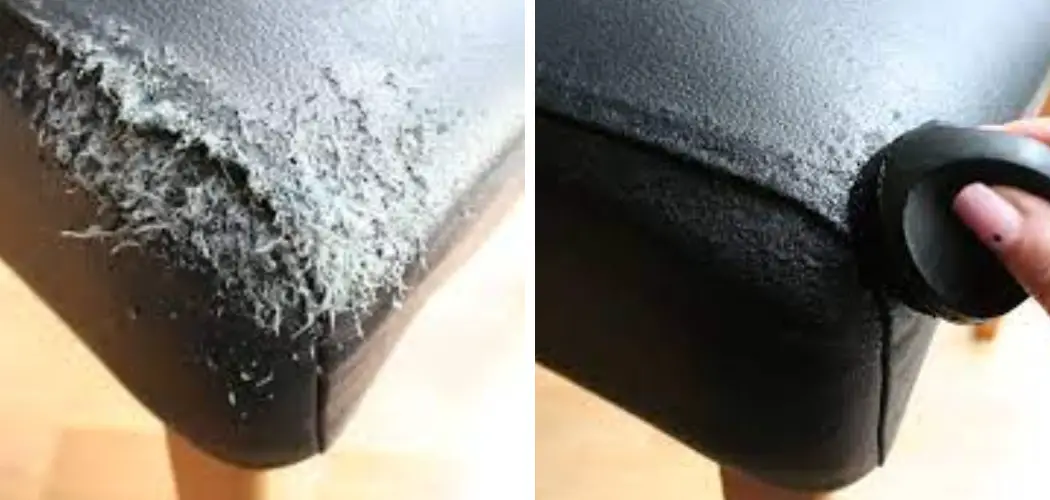Are you tired of seeing scratches and other unsightly blemishes on your leather furniture or accessories? If so, don’t despair – restoring scratched leather using a few simple techniques is possible.
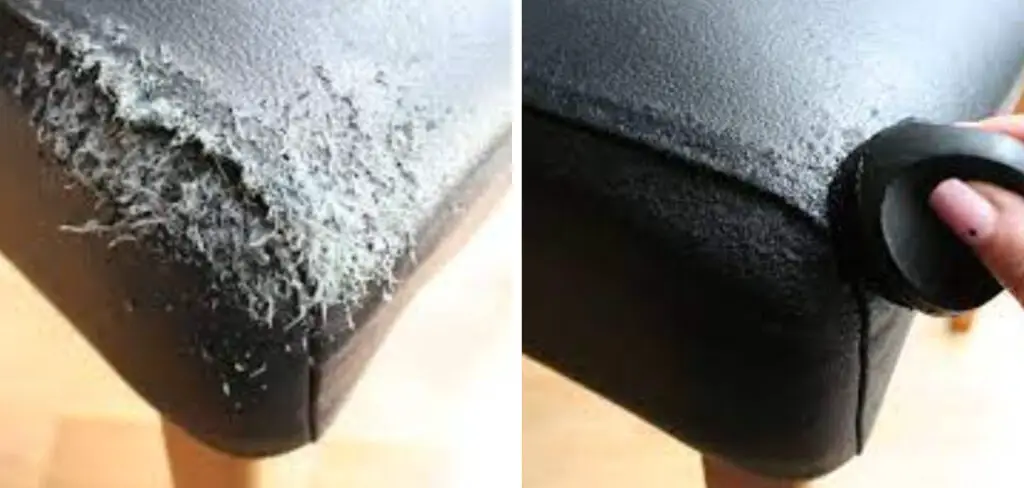
Leather is a durable and beautiful material that can last for years with proper care. However, it’s not immune to damage, and scratches can be one of the most frustrating problems to deal with. Fortunately, there are several ways to restore scratched leather, depending on the severity of the damage.
Before you go reaching for that can of leather repair spray, take a few minutes to try some of these techniques. With a little bit of effort, your furniture will look good as new.
In this post, we’ll discuss how to restore scratched leather using different methods and how to prevent scratches from happening in the first place. Let’s get started!
What Can Damage Leather?
Leather is prone to damage from various sources, including furniture polish, harsh chemicals, and exposure to sunlight over time.
Additionally, scratches can occur from items like hair clips, jewelry, and keys. Another common culprit is pet claws, so if you have a cat or dog that likes to lounge on your furniture, it’s especially important to take extra care to protect it.
Fortunately, no matter how severe the damage or how challenging the cause may be, there are several steps you can take to restore scratched leather.
What Will You Need?
Before you get started, it’s important to gather the right tools and supplies. Depending on how severe the scratches are and what approach you choose, you may need any of the following:
- Leather repair spray or other repair products
- Soft clothes or sponges
- Sandpaper, steel wool, or other abrasive materials
- Mild soap and water
- Leather conditioner or moisturizer
Once you’ve gathered these items, it’s time to get started! The first step will depend on how deep the scratches are. Keep reading to learn more.
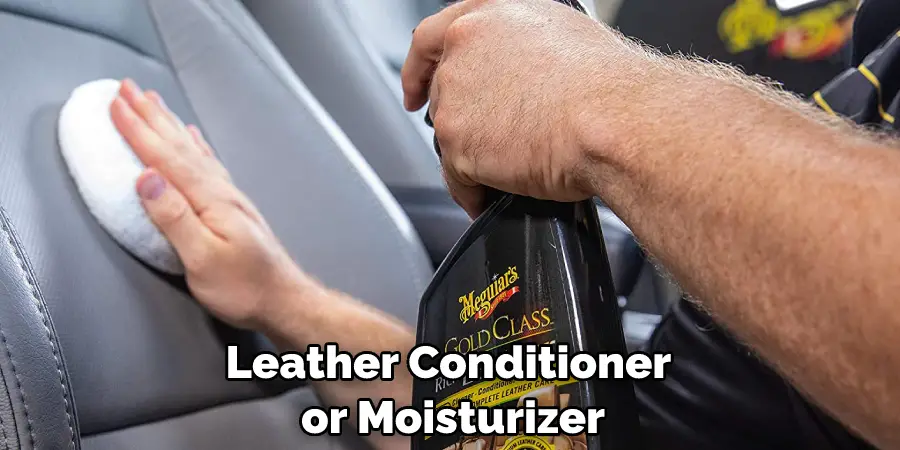
10 Easy Steps on How to Restore Scratched Leather
Step 1. Determine the Depth of Scratches
Before you start trying to repair scratched leather, it’s important to assess how deep the scratches are. If they’re relatively minor and superficial, a simple cleaning may be all you need. Make sure to test how much pressure the scratch can take before applying any products.
Step 2. Clean the Leather
Scratches in leather are often caused by dirt and debris that get caught in the material’s fibers. To clean your leather effectively, mix a mild soap and water solution and apply it with a soft cloth or sponge. Rinse thoroughly with cold water, then leave your furniture to air dry completely before moving on to other steps.
Step 3. Use an Abrasive Material
If deeper scratches are present, it may be necessary to use an abrasive material like sandpaper or steel wool to help buff out the damage. Be sure to use gentle pressure and avoid applying too much force, as this can cause further damage to the leather. It is best to start with a fine-grit material and progress to a coarser one if needed.

Step 4. Apply Leather Repair Products
If your scratches are still visible after cleaning and using an abrasive material, it may be time to try a more advanced approach. Various products are available specifically for repairing scratched leather, including repair sprays and moisturizers that help fill in scratches or cover them with a protective layer. Consult the product instructions carefully before applying any products.
Step 5. Condition Your Leather
Once you’ve restored your scratched leather, it’s important to protect it from future damage by keeping it properly conditioned and moisturized. This will help prevent scratches from occurring in the first place and extend the life of your leather products overall. Apply a quality leather conditioner as often as the manufacturer recommends to ensure optimal results.
Step 6. Avoid Potential Scratch Causes
In addition to using leather repair products, it’s also important to take steps to avoid common causes of scratching in the first place. For example, try keeping pet claws trimmed and avoiding placing sharp or heavy items on your leather couch or chair. With a little bit of extra care, you can keep your leather products looking great for years to come!
Step 7. Seek Professional Help
If you cannot restore your scratched leather on your own, don’t worry – there is still hope. There are some professional leather repair services available that can help you get your furniture looking like new again. Whether the scratches are minor or more severe, a professional can help assess your needs and provide effective solutions tailored to your situation.
Step 8. Practice Good Maintenance
In addition to seeking professional help when necessary, it’s also important to practice good maintenance overall. This means cleaning and conditioning your leather regularly, avoiding sharp objects and other potential scratch causes, and taking preventative measures to protect your leather products from damage.
Step 9. Consider Replacement or Repair Options
If you find that your scratched leather is beyond repair or doesn’t match the rest of your decor anymore, options are still available. You can either choose to replace the damaged piece entirely or have it professionally repaired by a leather specialist.
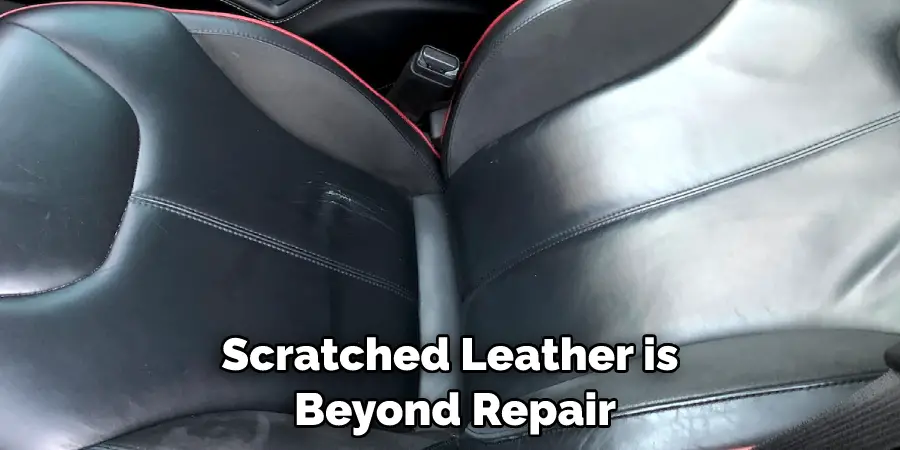
Step 10. Store Leather Products Correctly
Finally, if you want to ensure the longevity and condition of your leather furniture and other products, it’s important to store them correctly. This means keeping them out of direct sunlight and high-traffic areas and keeping them indoors or covered when not in use. With proper care and maintenance, your leather products will stay looking great for years to come!
Following these steps can help you effectively restore scratched leather and protect them from future damage. Whether you do it yourself or seek professional help, the most important thing is to be patient, thorough, and consistent in your approach. With a little time and effort, you can keep your leather looking great for years to come!
5 Additional Tips and Tricks
1. The first step in how to restore scratched leather is to identify the specific material that your leather item is made of, as this will help you determine which treatment methods will work best.
2. If your scratches are only superficial and don’t penetrate all the way through the surface of the leather, consider using a soft cloth or brush to buff out any imperfections gently.
3. While it may seem tempting, avoid using harsh chemicals on your leather items, as these can damage their finish and even cause permanent staining or discoloration.
4. Avoid using abrasive scrubbing pads, as these can further damage the surface of your leather and cause even more scratches.
5. Vacuum cleaners or compressed air can also be used to remove light scratches and dust, while taking care not to press too hard on the surface of the leather.
With proper care and regular maintenance, your leather items should stay looking fresh and new for years to come!
5 Precautions You Can Take
1. If you are a pet owner, keep your leather furniture out of reach of your pets. Dirt, hair, and scratches from pets’ claws can all damage and scratch leather surfaces over time.
2. Avoid using harsh chemicals or cleaning products on leather furniture. While these products may help remove stains or other blemishes, they can also damage the delicate surface of your leather furniture.
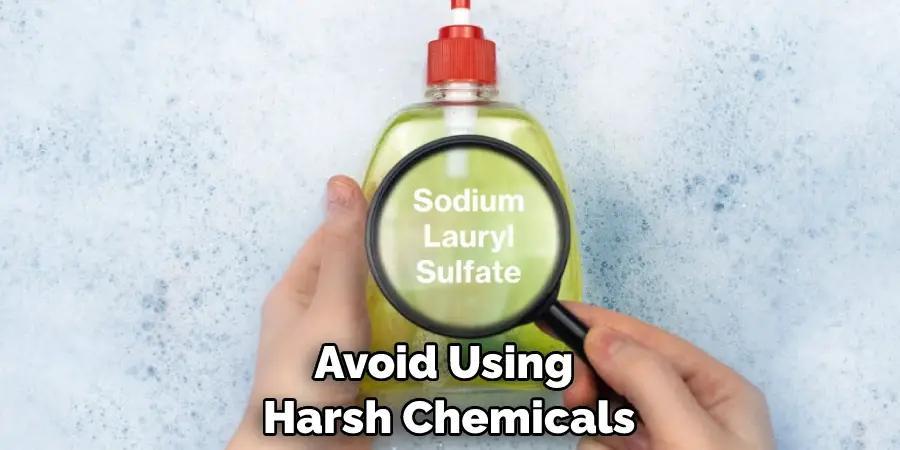
3. Avoid exposing leather furniture to direct sunlight and heat sources. Prolonged exposure can cause the leather to become dry and crack, resulting in unsightly scratches or other damage.
4. When cleaning your leather furniture, use a soft cloth or brush instead of harsh scrubbing tools like sponges or steel wool. These tools can damage the surface of your leather furniture and may exacerbate any scratches that are already present.
5. Don’t put pressure on your leather furniture when sitting down or leaning against it. Avoid using sharp objects like knives, pens, and scissors near leather furniture to prevent accidental scratching.
If you take these precautions, you can effectively restore scratched leather and keep your furniture looking beautiful for years to come.
Does Olive Oil Remove Scratches of Leather?
Though there is no definitive answer to this question, some experts suggest that using olive oil on scratched leather may help to remove or minimize these scratches. This is because olive oil contains natural oils and moisturizers that can help to soften the leather and fill in surface scratches.
However, it’s important to proceed with caution when using olive oil on your leather items, as there is always the risk that it could cause further damage or make scratches even more noticeable. If you’re unsure how your leather will react to olive oil, it may be best to consult a professional before trying this method on your own.
Frequently Asked Questions
Can You Fix Cat Scratches on Leather?
The severity and location of a cat scratch will vary. However, some general tips that may help include:
– Clean the area immediately with soap and water.
– Apply a cold compress to the wound for 15 minutes.
– Apply a topical cream or ointment to the wound.
– If the scratch is deep, seek veterinary attention.
How Does Olive Oil Fix Scratched Leather?
Olive oil is a natural remedy for scratches in leather because it helps to heal the skin and protect the underlying leather fibers. To use olive oil as a fix for scratched leather, apply a small amount to the scratch and work it into the surface with your fingers. Allow the oil to dry completely before using any protective coatings or treatments.
What to Use to Remove Deep Scratches?
There are a variety of products and methods that can be used to remove deep scratches from surfaces. Some of the most popular options include:
1. Polishing compounds or pads
2. Compounds with abrasives
3. Powders or liquids that contain acids or alkalis
4. Scratch-resistant coatings or sealants
5. Mechanical polishers
6. Waxes and sealants that protect the paint surface
Does Coconut Oil Repair Leather?
Yes, coconut oil can be used to repair leather. Coconut oil is a natural emollient and moisturizer, which makes it a good choice for repairing leather. When applied to damaged or dry leather, coconut oil can help to restore the surface layer and seal in moisture, preventing further damage and promoting the growth of new skin cells. Coconut oil can also help to reduce the appearance of wrinkles and creases in leather, making it more supple and youthful-looking.
Conclusion
You can use any of these methods to repair your leather and make it look new again. With a little time and effort, you can have your favorite leather items looking like new once more.
You now know how to restore scratched leather. For further reading, we suggest this blog post on expert tips for caring for your leather goods. By following the steps outlined in this blog post, you can easily restore your scratched leather and make it look as good as new. Give it a try and see for yourself!
Hopefully, this information has been helpful, and you are now equipped with the tools you need to restore your scratched leather items. Good luck, and happy restoring!

